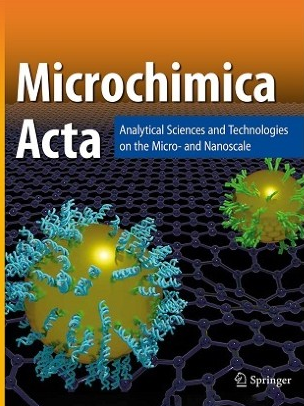A novel strategy for ultrasensitive detection and effective inactivation of Staphylococcus aureus based on Fe3O4-QCS-PEI-Cu-aptamer and ladder-branch HCR
Abstract
Bacterial infection is one of the leading causes of human death globally and is considered to be an urgent public health challenge. It is important to accurately and rapidly detect and kill pathogenic microorganisms. Therefore, a multifunctional platform for sensitive detection and efficient elimination of pathogenic bacteria should be developed to reduce the threat of bacteria. In this study, an integrated strategy based on Fe3O4-quaternary ammonium chitosan-polyetherimide-Cu-aptamer (Fe3O4-QCS-PEI-Cu-aptamer) and ladder-branch hybridization chain reaction (HCR) was proposed for the detection and inactivation of Staphylococcus aureus (S. aureus). The aptamer-complementary chain (aptamer-CP) conjugated to the surface of Fe3O4-QCS-PEI-Cu induces CP release in the presence of S. aureus, further initiating the ladder-branch HCR reaction and achieving signal amplification. Under optimal conditions, the developed sensor demonstrated a limit of detection (LOD) of 3 CFU/mL for S. aureus and exhibited high selectivity against several other pathogenic bacteria. Moreover, the Fe3O4-QCS-PEI-Cu-aptasensor showed potent antibacterial properties under near infrared (NIR) irradiation, achieving an antimicrobial efficiency of 99.946%. This strategy synergistically combined the high-sensitivity molecular detection with the antibacterial activity of novel nanomaterials activated by near infrared light, providing a new insight into the prevention of bacterial infections.
Graphical Abstract

 求助内容:
求助内容: 应助结果提醒方式:
应助结果提醒方式:


